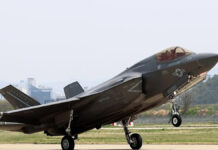The International Air Transport Association (IATA) has released global passenger traffic data for January showing that demand measured in total revenue passenger kilometres or RPKs) climbed 2.4 per cent compared to January 2019. This was down from 4.6 per cent year-over-year growth for the prior month and is the lowest monthly increase since April 2010, at the time of the volcanic ash cloud crisis in Europe that led to massive airspace closures and flight cancellations. January capacity (available seat kilometres or ASKs) increased by 1.7 per cent while load factor climbed 0.6 percentage point to 80.3 per cent. “January was just tip of the iceberg in terms of traffic impacts we are seeing owing to the COVID-19 outbreak, given that major travel restrictions in China did not begin until January 23. Nevertheless, it was still enough to cause our slowest traffic growth in nearly a decade,” said IATA’s Director General and CEO Alexandre de Juniac. January international passenger demand rose 2.5 per cent compared to January 2019, down from 3.7 per cent growth the previous month. With the exception of Latin America, all regions recorded increases, led by airlines in Africa and the Middle East that saw minimal impact from the COVID-19 outbreak in January. Capacity climbed 0.9 per cent and load factor rose 1.2 percentage points to 81.1 per cent. Asia Pacific airlines’ January traffic climbed 2.5 per cent compared to the year-ago period, which was the slowest outcome since early 2013 and a decline from the 3.9 per cent increase in December. Softer GDP growth in several of the region’s key economies was compounded by COVID-19 impacts on the international China market. Capacity rose 3 per cent and load factor slid 0.4 percentage point to 81.6 per cent. Demand for domestic travel climbed 2.3 per cent in January compared to January 2019, as strong growth in the United States helped mitigate the impact from a steep decline in China’s domestic traffic. Capacity rose 3 per cent and load factor dipped 0.5 percentage point to 78.9 per cent. US airlines saw domestic traffic climb 7.5 per cent in January. Although this was down from 10.1 per cent growth in December, it represented another strong month of demand growth reflecting supportive business confidence and domestic economic outcomes at the time. Capacity rose 4.9 per cent and load factor climbed 1.9 percentage points to 81.1 per cent. “The COVID-19 outbreak is a global crisis that is testing the resilience not only of the airline industry but of the global economy,” said de Juniac. Airlines are experiencing double-digit declines in demand, and on many routes traffic has collapsed. Aircraft are being parked and employees are being asked to take unpaid leave.” In this emergency, governments need to consider the maintenance of air transport in their response. “Suspension of the 80/20 slot use rule, and relief on airport fees at airports where demand has disappeared are two important steps that can help ensure that airlines are positioned to provide support during the crisis and eventually in the recovery,” said de Juniac.

Dogra Herald is the media of J & K, breaking language and geographical barriers, connecting J & K to the rest of India.
0191 245 4946
info@dograherald.com
Latest articles
Census 2021: Training programme to commence from Oct 14
iamjkstarr - 0
The training programme of the National trainers for Census 2021 is slated to begin from Monday, as per the government. The census is the...
Gemini Weekly Horoscope
iamjkstarr - 0
This Week
16-05-2021 - 22-05-2021
Married people may have to live at a distance for sometime....
LG takes cognizance of minor girl’s complaint
iamjkstarr - 0
JAMMU: Taking cognizance of a six-year old Kashmiri girl's complaint to PM Narendra Modi about online classes, Lt Governor Manoj Sinha today...


























